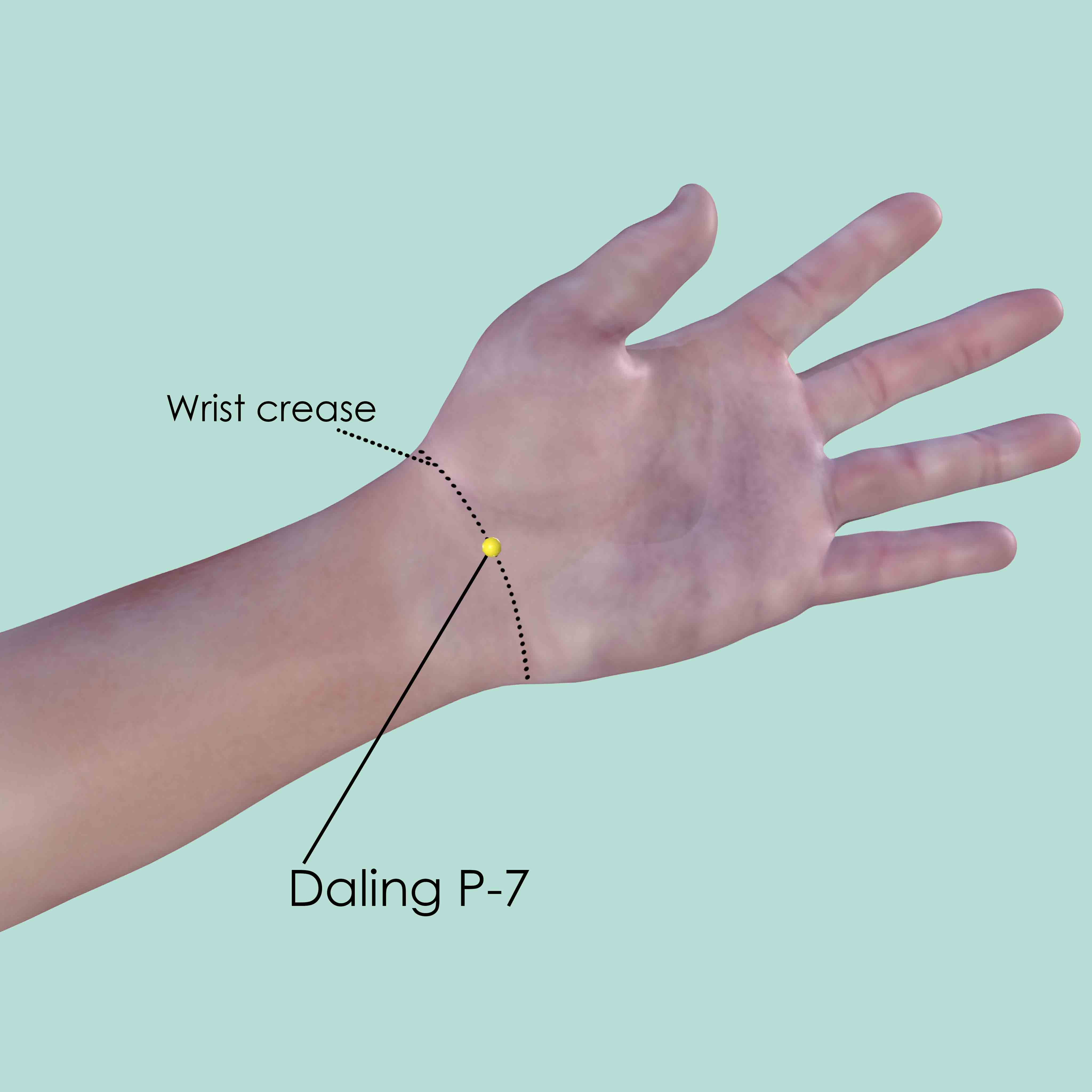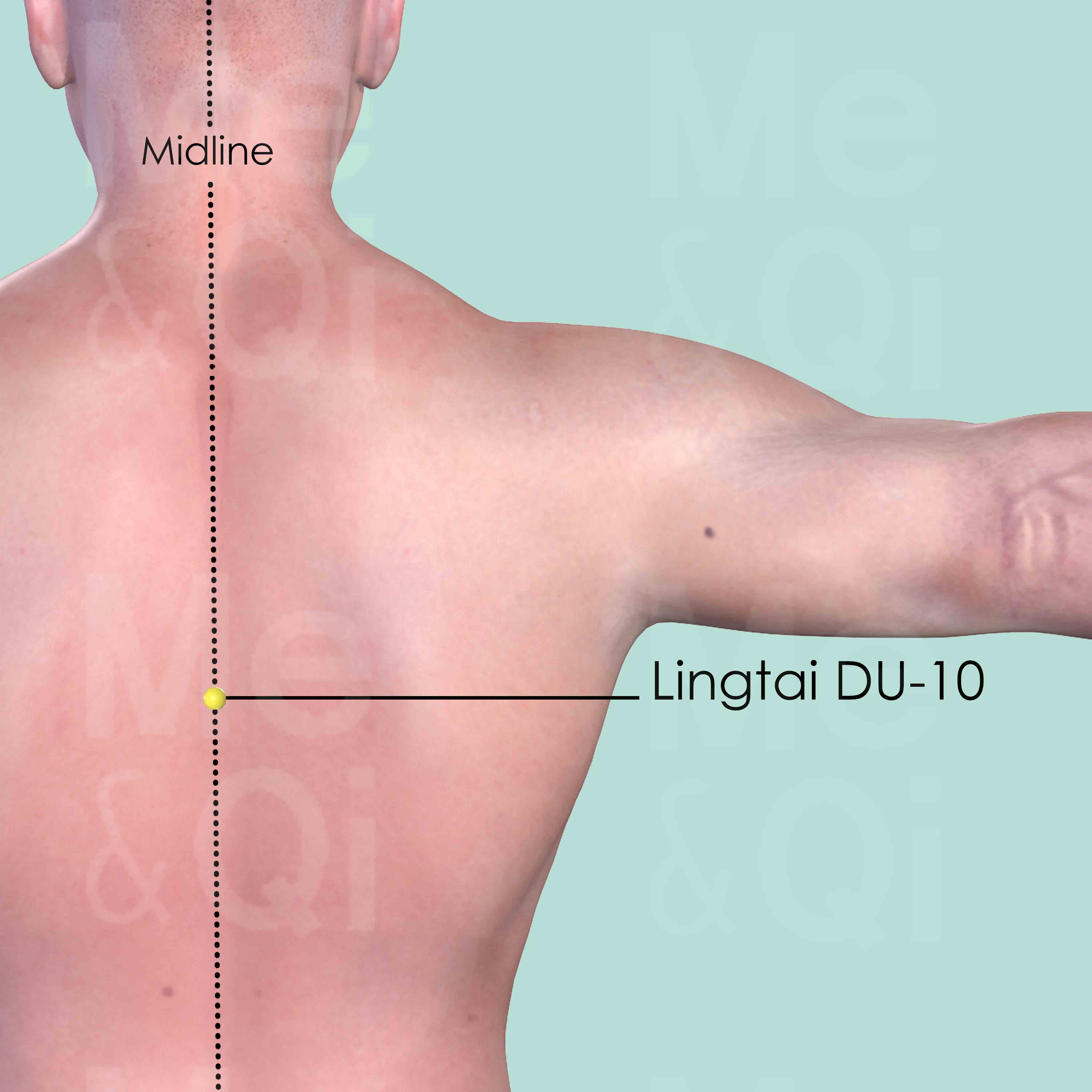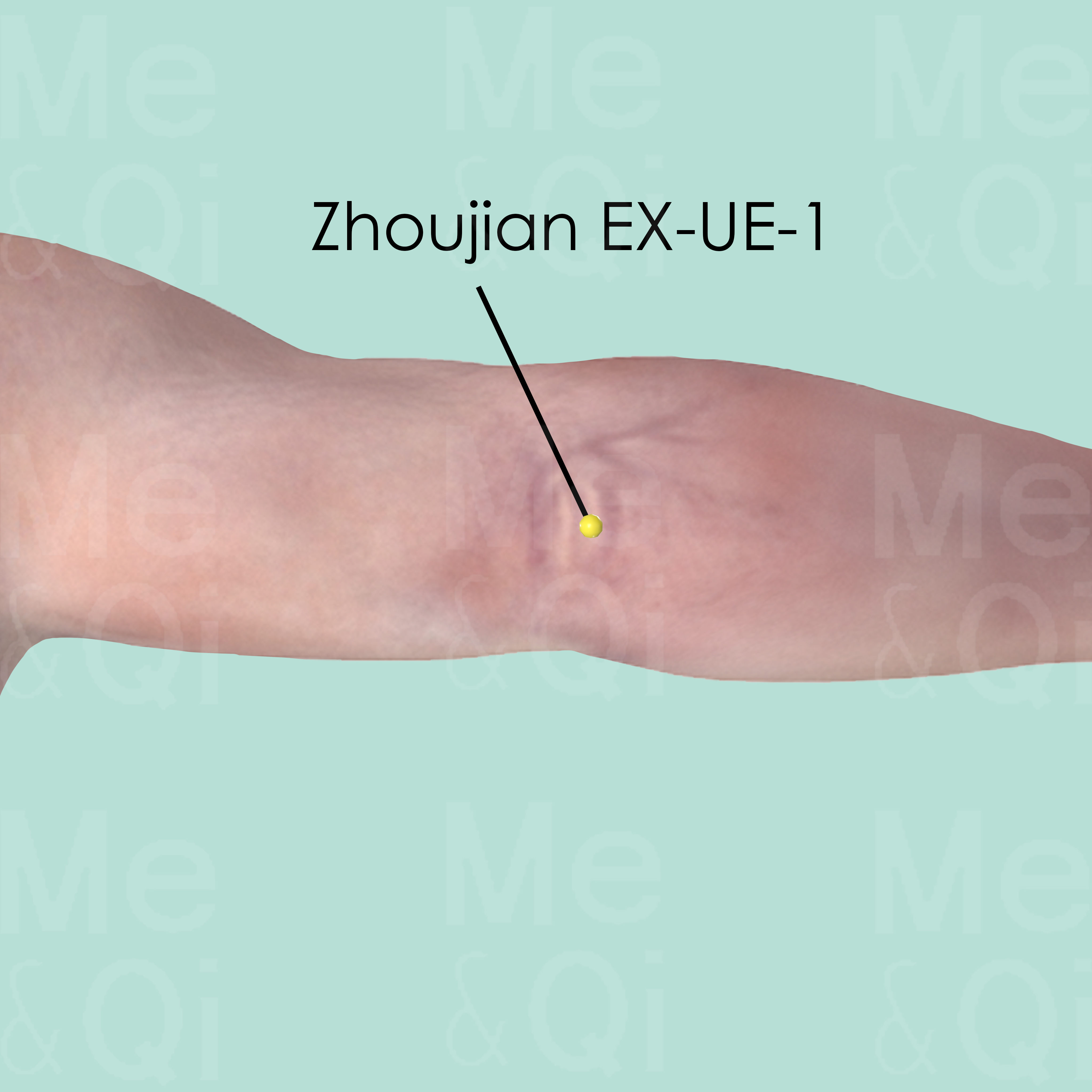Carbunclesaccording to TCM
Symptom family: Lumps, Swellings & Abscesses
Did you mean? Nodules
What are Carbuncles?
Carbuncles are deep, red, pus-filled boils that emerge as clusters, often indicating a severe bacterial infection. These painful lesions are larger than single boils, spanning several centimeters in diameter, and are caused by the bacterial strain Staphylococcus aureus. Carbuncles can cause fever and general malaise, highlighting the body's response to infection.
The condition requires medical attention, as it signifies not just a local skin issue but potentially a deeper systemic challenge. Understanding carbuncles is pivotal for effective treatment and preventing their recurrence.
How does TCM view Carbuncles?
In Traditional Chinese Medicine, the concept of a "pattern" is foundational, representing a comprehensive diagnosis that encapsulates the underlying cause of symptoms like carbuncles. A pattern goes beyond the superficial signs to the root imbalances in the body's Qi, Blood, and Organ systems.
Understanding the specific pattern—be it Toxic-Heat, Blood Deficiency, or another—is crucial because it informs a tailored treatment strategy. This approach ensures that therapy addresses both the manifestations and the internal disharmonies, paving the way for genuine, lasting healing.
Root Causes of Carbuncles in TCM
TCM identifies several patterns that can lead to the development of carbuncles, with Toxic-Heat and Blood Deficiency being prevalent. Toxic-Heat involves an overload of Heat and toxins in the body, presenting symptoms like fever, pus, and red skin eruptions. This condition signifies an excess that needs to be cooled and detoxified.
Blood Deficiency, contrastingly, suggests a lack of nourishment reaching the skin, which can be exacerbated by External Wind, leading to skin eruptions and itching. These patterns underscore the importance of diagnosing the specific disharmony to effectively treat carbuncles and prevent their recurrence through personalized herbal and acupuncture therapies.
Explore below more details about what might cause Carbuncles according to TCM.
- By Syndrome
- Heat
- Blood Deficiency
- Wind
Heat
In TCM "Heat" signifies an excess of Yang energy, leading to an imbalance where heat predominates over the body's cool Yin aspects. This condition is metaphorically akin to an internal over-heating. Symptoms indicative of Heat can include feelings of warmth, fever, sweating, irritability, red face, thirst with a preference for cold drinks, and a rapid pulse. The tongue may appear red with a yellow coating. Unlike the common interpretation of heat in terms of temperature, in TCM, it represents a state of hyperactivity or inflammation in the body.... see more
Heat Patterns That Can Lead to Carbuncles
Common Symptoms: Fever Pustule Red Skin Eruptions Sore Throat Eczema Perineum Swollen Prostate Swollen Testicular Swelling
| Pattern Name | Relevant Symptoms | Relevant Formulas |
|---|---|---|
| Toxic-Heat | Carbuncles, Fever, Edema, Pus and discharge, Boils, Pustule, Red skin eruptions, Sore throat, Eczema, Perineum swollen, Prostate swollen, Testicular swelling, Mouth ulcers, Tonsil swelling... see more | Er Qing Gao | Pu Ji Xiao Du Yin | Shi Wei Bai Du San | Yin Qiao San | Sang Ju Yin | Bai Hu Tang | Long Dan Xie Gan Tang | Qing Ying Tang | Xi Jiao Di Huang Tang | Huang Lian Jie Du Tang | Xin Yi Qing Fei Yin | Gan Lu Xiao Du Dan | San Zhong Kui Jian Tang | Zi Dang Gao | Bing Peng San | Wu Wei Xiao Du Yin |
| Toxic-Heat Stagnation | Carbuncles, Pustule, Fever, Red skin eruptions, Sore throat, Throat pain, Eczema, Perineum swollen, Prostate swollen, Testicular swelling, Mouth ulcers, Tonsil swelling... see more | Huang Lian Jie Du Tang | Xin Yi Qing Fei Yin |
Blood Deficiency
Blood Deficiency in TCM is like when your body's tank runs low on the vital energy that blood provides. It's not exactly the same as anemia in modern medicine, which is about having too few red blood cells. Instead, Blood Deficiency in TCM is about your body not having enough of the life-giving qualities that blood brings, like nourishment and moisture. This can make you feel tired, look pale, and even feel dizzy or have blurry vision. It's like a garden not getting enough water to stay lush and vibrant. TCM sees this as an imbalance where the body isn't being nourished as it should be, impacting overall health and well-being.... see more
Blood Deficiency Patterns That Can Lead to Carbuncles
| Pattern Name | Relevant Symptoms | Relevant Formulas |
|---|---|---|
| Blood Deficiency with External Wind | Carbuncles, Eczema, Red skin eruptions, Urticaria, Neurodermatitis, Ichthyosis, Psoriasis, Measles, Contact dermatitis, Itchy skin, Hair loss, Boils, Drug rash, Skin dryness, Itching worsen at nights, Flaking skin... see more | Dang Gui Yin Zi |
Wind
In TCM "Wind" is a concept that represents a pattern of disharmony, often characterized by its sudden and unpredictable nature, much like a gusty wind changing direction without warning. This pattern is associated with symptoms that come and go quickly or move around the body, such as itching, tremors, or even certain types of pain. Wind is considered to be a primary cause of illnesses that have these rapidly changing characteristics. In TCM, external Wind often refers to illnesses that start suddenly, like the common cold, believed to be caused by external pathogenic factors like climatic changes. On the other hand, internal Wind can be linked to internal imbalances and can manifest in conditions like dizziness or spasms. ... see more
Wind Patterns That Can Lead to Carbuncles
| Pattern Name | Relevant Symptoms | Relevant Formulas |
|---|---|---|
| Blood Deficiency with External Wind | Carbuncles, Eczema, Red skin eruptions, Urticaria, Neurodermatitis, Ichthyosis, Psoriasis, Measles, Contact dermatitis, Itchy skin, Hair loss, Boils, Drug rash, Skin dryness, Itching worsen at nights, Flaking skin... see more | Dang Gui Yin Zi |
TCM Herbal Formulas for Carbuncles
To combat carbuncles, TCM utilizes specific formulas and herbs designed to address the underlying patterns of Toxic-Heat or Blood Deficiency. For cases characterized by Toxic-Heat, formulas like Er Qing Gao with Natural Indigo (Qing Dai) and Huang Lian Jie Du Tang with Goldthread Rhizomes (Huang Lian) are prescribed for their potent heat-clearing and detoxifying properties.
In situations of Blood Deficiency, Dang Gui Yin Zi, enriched with Japanese catnip (Jing Jie), works to nourish the blood and disperse External Wind, targeting the root cause of carbuncles. This approach highlights TCM's holistic strategy, employing herbs that specifically resonate with the body's needs to restore balance and health.
Explore below some TCM herbal formulas used to address carbuncles, organized by cause and by formula type.
- By Cause
- By Formula Type
- Heat
- Blood Deficiency
- Wind
- External formulas for external disorders
- Formulas that clear heat and resolve toxicity
- Formulas that clear external abscesses and sores
- Formulas that clear heat from the organs
- Formulas that clear nutritive-level heat
- Formulas that dredge and disperse external wind
- Formulas that clear wind-Heat
- Formulas that clear qi-level heat
- Formulas that clear heat and expel dampness
Top Formula for Heat:
Huang Lian Jie Du Tang
Suitable for Heat patterns that may cause carbuncles, such as Toxic-Heat or Toxic-Heat Stagnation
Learn moreAll Formulas Recommended for Carbuncles Caused by Heat
| Formula | Patterns Suitable For |
|---|---|
| Huang Lian Jie Du Tang | Toxic-Heat, Toxic-Heat Stagnation |
| Xin Yi Qing Fei Yin | Toxic-Heat, Toxic-Heat Stagnation |
| Er Qing Gao | Toxic-Heat |
| Pu Ji Xiao Du Yin | Toxic-Heat |
| Shi Wei Bai Du San | Toxic-Heat |
| Yin Qiao San | Toxic-Heat |
| Sang Ju Yin | Toxic-Heat |
| Bai Hu Tang | Toxic-Heat |
| Long Dan Xie Gan Tang | Toxic-Heat |
| Qing Ying Tang | Toxic-Heat |
| Xi Jiao Di Huang Tang | Toxic-Heat |
| Gan Lu Xiao Du Dan | Toxic-Heat |
| San Zhong Kui Jian Tang | Toxic-Heat |
| Zi Dang Gao | Toxic-Heat |
| Bing Peng San | Toxic-Heat |
| Wu Wei Xiao Du Yin | Toxic-Heat |
Top Formula for Blood Deficiency:
Dang Gui Yin Zi
Suitable for Blood Deficiency patterns that may cause carbuncles, such as Blood Deficiency with External Wind
Learn moreTop Formula for Wind:
Dang Gui Yin Zi
Suitable for Wind patterns that may cause carbuncles, such as Blood Deficiency with External Wind
Learn moreFormulas that clear Heat and resolve toxicity
These formulas are suitable for some carbuncles-causing patterns like Toxic-Heat or Toxic-Heat Stagnation.
One such formula is Huang Lian Jie Du Tang, with goldthread rhizome as a key herb.
Other formulas of this category are listed in the table below.
All "formulas that clear heat and resolve toxicity" recommended for carbuncles
| Formula | Patterns Suitable For (if applicable) |
|---|---|
| Huang Lian Jie Du Tang | Toxic-Heat, Toxic-Heat Stagnation |
| Pu Ji Xiao Du Yin | Toxic-Heat |
| Xie Xin Tang | Not applicable |
| Liang Ge San | Not applicable |
Formulas that clear Heat from the Organs
These formulas are suitable for some carbuncles-causing patterns like Toxic-Heat or Toxic-Heat Stagnation.
One such formula is Xin Yi Qing Fei Yin, with biond’s magnolia flowers as a key herb.
Other formulas of this category are listed in the table below.
All "formulas that clear heat from the organs" recommended for carbuncles
| Formula | Patterns Suitable For (if applicable) |
|---|---|
| Xin Yi Qing Fei Yin | Toxic-Heat, Toxic-Heat Stagnation |
| Long Dan Xie Gan Tang | Toxic-Heat |
External formulas for External disorders
These formulas are suitable for some carbuncles-causing patterns like Toxic-Heat.
One such formula is Er Qing Gao, with natural indigo as a key herb.
Other formulas of this category are listed in the table below.
All "external formulas for external disorders" recommended for carbuncles
| Formula | Patterns Suitable For (if applicable) |
|---|---|
| Er Qing Gao | Toxic-Heat |
| Yin Qiao San | Toxic-Heat |
| Zi Dang Gao | Toxic-Heat |
| Bing Peng San | Toxic-Heat |
Formulas that clear external abscesses and sores
These formulas are suitable for some carbuncles-causing patterns like Toxic-Heat.
One such formula is Shi Wei Bai Du San, with saposhnikovia root as a key herb.
Other formulas of this category are listed in the table below.
All "formulas that clear external abscesses and sores" recommended for carbuncles
| Formula | Patterns Suitable For (if applicable) |
|---|---|
| Shi Wei Bai Du San | Toxic-Heat |
| San Zhong Kui Jian Tang | Toxic-Heat |
| Wu Wei Xiao Du Yin | Toxic-Heat |
Formulas that clear nutritive-level Heat
These formulas are suitable for some carbuncles-causing patterns like Toxic-Heat.
One such formula is Qing Ying Tang, with water buffalo horn as a key herb.
Other formulas of this category are listed in the table below.
All "formulas that clear nutritive-level heat" recommended for carbuncles
| Formula | Patterns Suitable For (if applicable) |
|---|---|
| Qing Ying Tang | Toxic-Heat |
| Xi Jiao Di Huang Tang | Toxic-Heat |
Formulas that dredge and disperse External Wind
These formulas are suitable for some carbuncles-causing patterns like Blood Deficiency with External Wind.
One such formula is Dang Gui Yin Zi, with japanese catnip as a key herb.
Formulas that clear Wind-Heat
These formulas are suitable for some carbuncles-causing patterns like Toxic-Heat.
One such formula is Sang Ju Yin, with mulberry leaves as a key herb.
Formulas that clear Qi-level Heat
These formulas are suitable for some carbuncles-causing patterns like Toxic-Heat.
One such formula is Bai Hu Tang, with gypsum as a key herb.
Formulas that clear Heat and expel dampness
These formulas are suitable for some carbuncles-causing patterns like Toxic-Heat.
One such formula is Gan Lu Xiao Du Dan, with baikal skullcap root as a key herb.
Acupoints for Carbuncles
TCM also advocates for the strategic use of acupuncture in treating carbuncles, pinpointing acupoints that synergize with the body's meridians to clear Heat, transform Phlegm, and reduce swelling. Daling P-7 on the Pericardium Channel, Lingtai DU-10 on the Governing Vessel, and Zhoujian EX-UE-1 among the Extra Points are particularly effective.
Stimulating these points can calm the mind, harmonize the Stomach, and significantly alleviate the symptoms associated with carbuncles. This method underscores the comprehensive nature of TCM treatments, emphasizing the integration of acupuncture with herbal medicine to achieve a balanced and effective healing process.
Explore below some acupoints used to address carbuncles, organized by meridian.
- By Meridian
- Pericardium Channel
- Governing Vessel
- Extra Points: Upper Extremities (EX-UE)

Daling P-7
In the depression in the middle of the transverse crease of the wrist, between the tendons of palmaris longus and flexor carpi radialis muscle.

Lingtai DU-10
On the back midline, in the depression below the spinous process of the 6th thoracic vertebra (T6).

